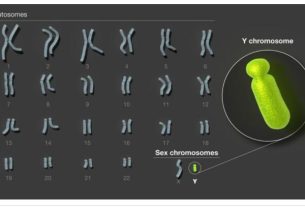|
Getting your Trinity Audio player ready...
|
When it comes to happy marriages, which is true? “Opposites attract” or “Birds of a feather flock together?”
A new American study has decoded the question with a meta-analysis based on data about millions of couples over more than 100 years in the US and the UK. They looked at 22 traits across 199 studies including millions of male-female co-parents, engaged pairs, married pairs, or cohabitating pairs; the oldest study was conducted in 1903.
The answer is that birds of a feather flock together, said first author Tanya Horwitz, a doctoral candidate in the psychology and neuroscience department and the Institute for Behavioral Genetics (IBG) at the University of Colorado at Boulder.
The study, just published in the prestigious journal Nature Human Behavior. was entitled “Evidence of correlations between human partners based on systematic reviews and meta-analyses of 22 traits and UK Biobank analysis of 133 traits including many that are seldom studied, across almost 80,000 opposite-sex pairs in the UK.
The meta-analysis confirms what individual studies have hinted at for decades, defying the age-old adage that opposites attract. It found that for between 82% and 89% of traits analyzed – ranging from political leanings to age of first intercourse to substance use habits –partners were more likely than not to be similar.
For only three percent of traits and only in one part of their analysis did individuals tend to partner with those who were different than them. Besides shedding light on unseen forces that may shape human relationships, the research has important implications for the field of genetic research.
“A lot of models in genetics assume that human mating is random. This study shows this assumption is probably wrong,” said senior author and IBG director Prof. Matt Keller, noting that what is known as “assortative mating” – when individuals with similar traits couple up – can skew findings of genetic studies.
Same-sex couples not included in resarch
Same-sex couples were not included in the research; because the patterns there may differ significantly, the authors are now exploring those separately.
Across both analyses, traits like political and religious attitudes, level of education, and certain measures of IQ showed particularly high correlations. For instance, on a scale in which zero means there is no correlation and one means couples always share the trait, the correlation for political values was .58.
Traits around substance use also showed high correlations, with heavy smokers, heavy drinkers and teetotalers tending strongly to partner up with those with similar habits. Traits like height and weight, medical conditions and personality traits showed far lower but still positive correlations.
For some traits, like extroversion, there was not much of a correlation at all. “People have all these theories that extroverts like introverts or extroverts like other extroverts, but the fact of the matter is that it’s about like flipping a coin: Extroverts are similarly likely to end up with extroverts as with introverts,” said Horwitz.
The researchers found no compelling evidence on any trait that opposites attract. In the UK Biobank sample, they did find a handful of traits in which there seemed to be a negative correlation, albeit small. Those included: chronotype (whether someone is a “morning lark” or “night owl”), tendency to worry and had difficulty hearing. More research must be done to unpack those findings, they said.
The trait for which couples were most likely to be similar was, not surprisingly, birth year. But even seldom-studied traits, like how many sexual partners a person had had or whether they had been breastfed as a child showed some correlation. “These findings suggest that even in situations where we feel like we have a choice about our relationships, there may be mechanisms happening behind the scenes of which we aren’t fully aware,” Horwitz added.
The authors noted that couples share traits for a variety of reasons. Some grow up in the same area, are attracted to people who are similar to them or grow more similar the longer they are together.
Depending on the cause, there could be future consequences. For example, Horwitz explains, if short people are more likely to produce offspring with short people and tall people with tall people, there could be more people at the height extremes in the next generation. The same goes for psychiatric, medical or other traits.
There could also be social implications. For instance, some small previous studies have suggested that Americans are growing more likely to couple up with people with similar educational backgrounds – a trend that, some theorize, could widen the socioeconomic divide. Notably, the new study also showed that the strength of correlations for traits differed across populations, and possibly, they are also likely to change over time.
The researchers caution that the correlations they found were fairly modest and should not be overstated or misused to promote an agenda; Horwitz points out that assortative mating research was, tragically, co-opted by the eugenics movement of people around the world who claimed humans could be perfected and social problems eliminated by involuntary sterilization, segregation and social exclusion to prevent the birth of the “unfit.”
The authors said they hoped their study would spark more research across disciplines, from economics to sociology to anthropology and psychology. “People could use this data to do their own analyses and learn more about how and why people end up in the relationships they do,” she said.



